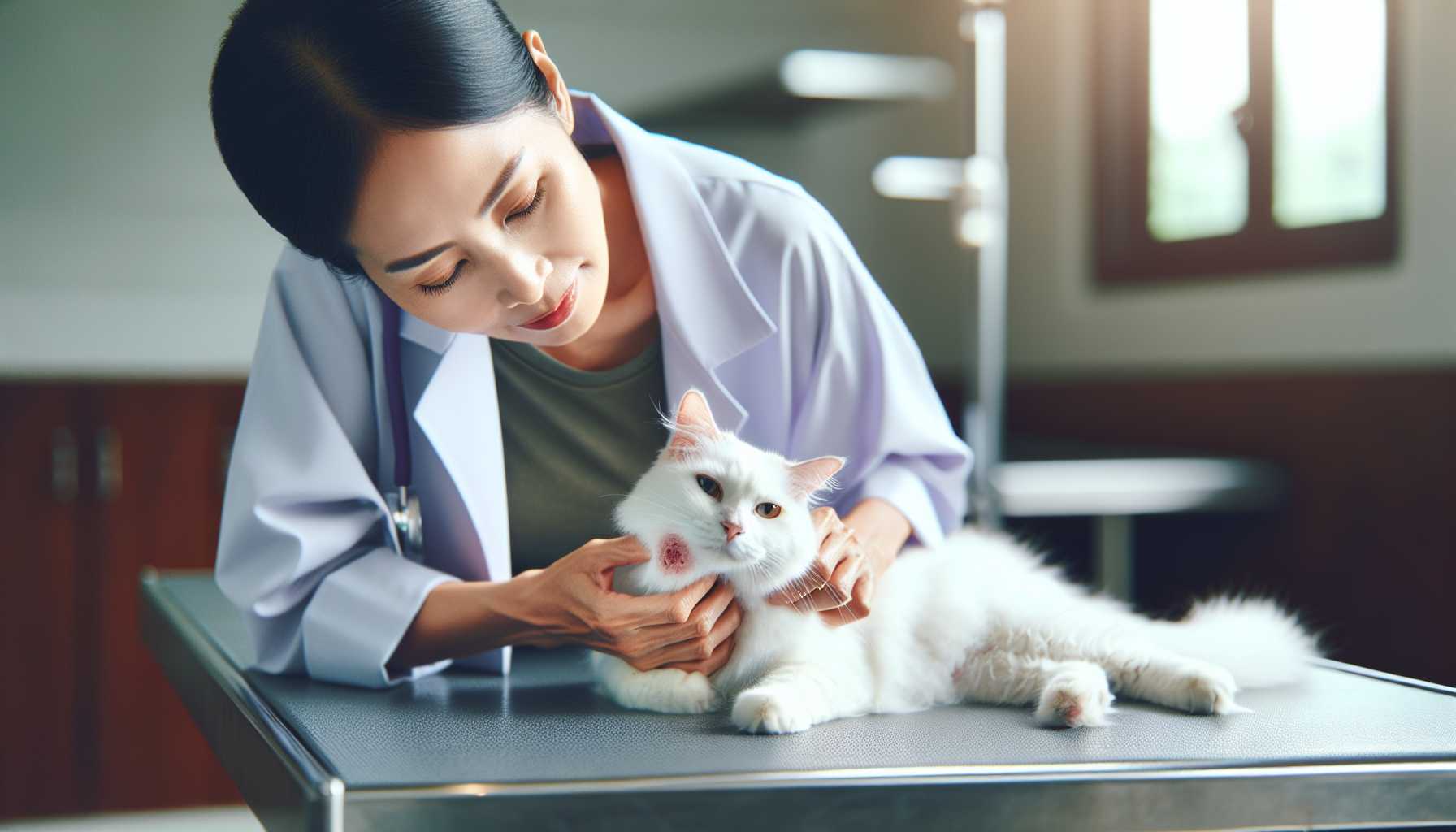Skin Reactions to Food Allergies: Cat Treatment Guide

A Comprehensive Guide to Treating Cats with Food Allergy Skin Reactions
SEO Slug: treating-cat-food-allergy-skin-reactions Focus Keyphrase: treating cat food allergy skin reactions Meta Description: Discover how to identify and counter skin reactions in cats caused by food allergies. This detailed guide offers useful knowledge for pet owners dealing with feline food sensitivities and skin conditions.
Has your pet been showing signs of discomfort like excessive scratching? Food allergies in cats can cause significant discomfort and often lead to skin reactions. Let's explore the necessary steps towards making your cat feel at ease.
Identifying Symptoms of Food Allergies in Cats
While your cat isn't able to communicate the discomfort they're experiencing verbally, their body language speaks volumes. Be on the lookout for these signs: - Unusual scratching - Irritated, red skin - Hair loss - Small bumps or scabs - Ear infections - Frequent head-shaking
Typical Food Triggers for Cats
Cats, like humans, can have sensitivities to particular ingredients. Here are some of the most common triggers: - Beef - Dairy products - Fish - Chicken - Eggs - Wheat or grain products
How to Diagnose Food Allergies in Cats
The process of identifying food allergies may be complex, but your vet can guide you. They might suggest: - Elimination diets - Food challenges - Skin tests - Blood tests
Treating Skin Reactions: What Options are Available?
Here are some ways you can help your cat feel better:
Immediate Alleviation
- Foam or moist shampoos
- Safe antihistamines (approved by a vet)
- Topical solutions
- Omega-3 supplements
Long-term Strategies
- Transitioning to hypoallergenic meals
- Restrictive ingredient diets
- Consistent grooming
- Changes in your cat's environment
Preventing Future Issues
You can prevent discomfort in your cat in the future by: - Reading food labels meticulously - Keeping a food journal - Sticking to a consistent diet - Scheduling regular vet visits
When it's Time for a Vet Visit
Don't hesitate to see a vet if you observe: - Constant scratching - Wounds that are open - Loss of appetite - Changes in behaviour - Respiratory issues
Helping Your Cat Through the Recovery Process
Recovery may require time and understanding. Ensure to: - Maintain consistency in administering treatment plans - Shower your pet with love and care - Monitor symptoms carefully - Celebrate small signs of improvement
Maneuvering through food allergies can be tough, but with the right approach, your cat can still lead a content and healthy life. Always remember to seek your vet's advice before making significant diet changes or introducing new treatments.
As your feline friend's caregiver, making health decisions for them is part of your role. This guide equips you to navigate skin reactions related to food allergies effectively, keeping your cat in a state of contentment.
Do remember: Every cat is special and what is effective for one may not be for another. Always consult with your vet for personalized advice best suited for your cat.